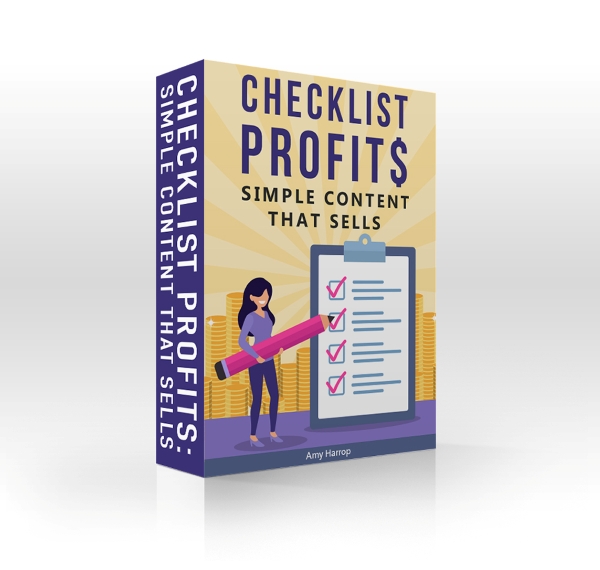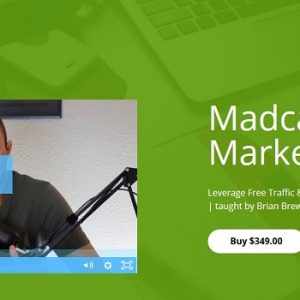No products in the cart.
Checklist Profits – Simple Content That Sells
$27.00 $5.00
- Payment method: I will send the payment link to your email.
- Deliver by: Google Drive, Mega.nz
Category: Marketing
Checklist Profits unlocks a world of opportunity for individuals looking to monetize their expertise and passions without the complexities often associated with online business. This guide explores the core principles of this innovative approach, diving into the potential of creating and selling simple checklists.
Table of Contents
Checklist Profits
Checklist Profits isn’t just a catchy name; its a pathway to generating income by distilling your knowledge into easily digestible and actionable checklists. It’s about transforming your hobbies, skills, and experience into a profitable venture.
The Core Premise: Monetizing Your Expertise
At the heart of Checklist Profits lies the idea that everyone possesses valuable knowledge worth sharing, and there are a lot of other people who are willing to pay money to find out what you know. This isn’t about claiming to be an expert; it’s about recognizing that your experiences, perspectives, and solutions to everyday problems hold value for others. Someone struggling to train their puppy, for example, would gladly pay for a checklist offering a step-by-step, proven strategy. Similarly, a novice golfer would benefit from a checklist outlining the key elements of a perfect swing.
The key to successfully monetizing your expertise through checklists is identifying the sweet spot where your passions align with market demand. Start by considering topics you genuinely enjoy and possess a deep understanding of. What do friends and family constantly ask you for advice on? What are you naturally good at? These areas likely represent potential checklist revenue streams. Think about your hobbies – fishing, cooking, gardening, photography. Then think about your professional skills – marketing, project management, customer service, or even something esoteric like database management or vintage car restoration. The more specific and niche your topic, the easier it will be to attract a dedicated audience willing to pay for your expertise. According to the author, “You Can Make Money Creating Checklists About The Things You Love Doing Or Talking About” which perfectly highlights the potential of leveraging one’s passion.
It is important to not fall into the trap of thinking your knowledge isn’t valuable or unique enough. Remember the quote “No one would pay for what I know. ‘ That’s not true and I can prove it.” – Amy Harrop. There are countless potential customers searching for solutions to their problems, and the unique way you present information through your experience can be incredibly appealing.
Accessibility and Simplicity
One of the biggest draws of Checklist Profits is its accessibility. It’s designed for individuals who may not consider themselves writers or tech experts. The emphasis is on creating content, not conquering complex software or perfecting elaborate marketing campaigns. Harrop emphasizes, “No writing huge ebooks. No having to give a webinar. Nothing long or complicated at all… Just create a set of simple checklists to teach others what you know. And make money doing it.” This means you don’t need to spend months writing a book or building a sophisticated website to start generating income.
The checklist format naturally fosters simplicity. It breaks down complex processes into actionable steps, making it easy for customers to follow and achieve desired outcomes. By focusing on clarity, conciseness, and practical advice, you can create valuable resources that resonate with a wide audience. Don´t fall in the trap of having analysis paralysis. Perfection is the enemy of progress. Just pick up one topic, think about the things that will be helpful for people and start writing everything down and organizing your thoughts. If you don´t feel like that checklist delivers 100%, that´s ok, you can always update your checklist in the future when you have a new idea or you discover more options to include in it.
The course simplifies content creation because, as stated in the original text, the focus is on showing you how to turn your knowledge into profitable checklists that you can sell to other people! This contrasts with courses that are mostly about website construction or marketing tactics, which can be learned or outsourced elsewhere. This emphasis alone allows individuals to concentrate on what they do best: sharing knowledge.
Providing Value: A Win-Win Scenario
Checklist Profits promotes the idea of a mutually beneficial relationship between creator and customer. It highlights the dual benefit of generating income while simultaneously helping others achieve their goals or solve their problems. This “Win-Win!” approach is crucial for long-term success.
Creating checklists that genuinely solve problems fosters trust and encourages repeat business. When customers find your checklists helpful and effective, they are more likely to purchase additional resources from you or recommend your products to others. This builds a loyal customer base and enhances your credibility making it great for business.
By focusing on providing value, you can differentiate yourself in a crowded online marketplace. And it is better than competing on low prices alone. Customers are willing to pay for quality content that delivers results. Checklists offer a unique way to provide immediate value. People are constantly searching for effective strategies and quick solutions. Your checklists offer them the exact guidance they need to achieve their goals.
Simple Content That Sells
Simple Content That Sells is more than an alluring phrase; it’s the key differentiator of Checklist Profits. In a world saturated with lengthy ebooks, complex courses, and demanding webinars, checklists stand out for their brevity, practicality, and ease of use.
The Power of the Checklist Format
The checklist format itself is inherently appealing. It’s concise, actionable, and easy to follow. People are drawn to checklists because they offer a clear roadmap to achieving a specific goal. The structure of a checklist will eliminate the overwhelming prospect of trying to learn and put new skills into practice.
Instead of sifting through pages of text, customers can quickly identify the key steps they need to take and mark them off as they go. This provides a sense of accomplishment and motivates them to continue. Consider the difference between reading a lengthy guide on “How to Start a Blog” and using a checklist that outlines the essential steps: Choose a niche, select a domain name, set up hosting, install WordPress, create a content calendar, etc. The checklist provides a clear, manageable path to success.
Beyond the basic procedural list, Checklist Profits introduces five distinct checklist types: Procedural, Connective, Discovery, Interrogatory, and Diagnostic. This variety demonstrates that you can use a checklist in almost any situation. For example, a “Diagnostic” checklist could help you identify where a business is struggling; this has more analytical applications than you might first expect.
Deconstructing the Checklist: More Than Just a List
While the focus is on simplicity, Harrop clarifies that these aren’t just one-sentence bullet points. Your checklist not only provides the steps of a process, it also provides details on what to do. It’s still short enough to print, yet it provides details that are sure to get your customers referring to it again and again. Instead, they are mini-blueprints, acting as a guide for your customers.
Think of it like a travel guide, “This ensures the checklists are practical and provide real value,” as the author indicates. You wouldn´t want a tour guide that just tells you to “go to that place” without any further context. You would want the tour guide to tell you what is unique about that place, why you should visit it, and how you should get there. Similarly, each element within your checklist should provide context, examples, and actionable tips.
For instance, if your checklist includes a step like “Optimize Your Website for Mobile Devices,” you could provide brief explanations on why mobile optimization is important, tips on how to choose a mobile-responsive theme, and examples of mobile-friendly design elements. As long as whatever details you add are relevant and concise, it’s going to be a high-quality checklist for your clients.
Two Complementary Sales Models
This curriculum will teach you two primary ways to monetize checklist sales. The first one involves free checklists, which are provided to other businesses and marketers to give away as lead magnets or value-added content. Meanwhile, paid checklists will be sold directly to the consumer.
Distributing free checklists to boost lead generation is not a new idea; however, it is extremely effective. You can partner with other marketers so that at the end of the checklist, your product is referenced. This is a good way to subtly grow your business without needing extensive marketing.
Selling checklists directly to consumers is probably the most common way of doing it. You will have 100% control over pricing and can manage marketing and sales efforts on your own. This model typically yields a higher profit margin on each sale compared to the free checklist approach. You should consider both models, as they are not mutually exclusive.
Essential Elements of an Effective Checklist
Creating a checklist is not as easy as it seems. They are a few things that you should keep in mind when crafting a quality piece for your clients to maximize your profit. Lesson Three in the program will teach you the “7 Things To Include In Each Checklist So Users Can Get The Outcome They Want” This highlights the importance of creating effective problem-solving content.
First and foremost is to have a clear objective. Each checklist should focus on helping users achieve a specific goal or solve a particular problem. Before you start writing, define the desired outcome and keep it top of mind throughout the creation process. Secondly, use clear and concise language. Avoid jargon and technical terms wherever possible. Use simple words that your audience will comprehend.
Organize the steps logically and sequentially. Each step should build upon the previous one, creating a natural flow that’s easy to follow. Be specific and provide concrete examples. Don’t just tell users what to do, show them how to do it. And finally, incorporate visual aids. Consider adding images, screenshots, or diagrams to illustrate key concepts and enhance understanding. A few visual queues would make the whole piece visually appealing and easier to consume, compared to a big wall of text.
Using Bundling for Maximum Profit
The program advocates selling checklists in bundles of at least 10 related items, with Lesson Four detailing “What An Ideal Set Of Checklists That People Want To Buy Looks Like”, including examples like “The Ultimate Checklist” and “The ‘Your First ‘ Checklist.”
Bundling allows you to increase the perceived value of your products and command a higher price. Customers are more likely to purchase a set of 10 checklists for $47 than a single checklist for $7. It will also increase profitability because the cost of selling one checklist or a set of checklists will be the same. So bundle your product as much as possible to increase your revenue.
Bundling can turn checklists into an authoritative “go to” resource that establishes you as an expert. The program’s focus on Checklist Profits, emphasizes how to create lists covering various aspects of subject matter – all related.
Generating Bonus Bucks with Every Checklist
In Lesson Nine, you’ll learn “7 Ways To Build In Automatic ‘Bonus Bucks’ For Each Checklist You Create“, suggesting strategies for increasing revenue beyond the initial sale. Checklist Profits uses upselling to increase revenue.
For instance, you could include a link to a related affiliate product or service within your checklist. If your checklist provides tips on setting up a home office, you could recommend a particular ergonomic chair or monitor. You could also offer a premium upgrade, such as a video tutorial or a one-on-one consultation.
“Bonus Bucks” may be a good strategy because everything happens within the checklist; the user won’t need to pay for another subscription or product. However, it also requires careful planning. The value proposition needs to be present and not feel like a desperate sales pitch.
Templates and Bonuses: Accelerating Your Success
To accelerate the creation and selling process, the Checklist Profits package includes done-for-you templates, 101 topic ideas, a fill-in-the-blanks sales letter template, a case study, and writing tips. The author emphasizes the templates make turning your ideas into Checklist Profits as easy as copy and paste.
Having access to pre-designed templates can save significant time and effort. Instead of starting from scratch, you can simply customize the templates with your own content and branding. This allows you to focus on your expertise and generate revenue faster.
Topic ideas are especially valuable for individuals who are unsure where to start. The list of 101 potential topics can spark inspiration and help you identify profitable niche areas. Fill-in-the-blank sales letter templates, case studies, and writing tips can provide further guidance and support, especially for those new to online marketing. Also, a key point to consider is the no-fluff, quick-read curriculum that walks you through ten lessons for creating checklists about your favorite topic to sell to others who are willing to pay to know what you know.
Conclusion
Checklist Profits offers a streamlined approach to monetizing expertise by creating and selling checklists. Its appeal lies in its accessibility, simplicity, and emphasis on delivering value. By focusing on crafting concise, actionable content and utilizing the resources provided, individuals can turn their passions and knowledge into a sustainable income stream.
Sales Page:_https://www.amyharrop.com/go/checklistprofits/
Be the first to review “Checklist Profits – Simple Content That Sells” Cancel reply
Related products
$19.00
$19.00
Sale!
Marketing
$39.00
Sale!












Reviews
There are no reviews yet.